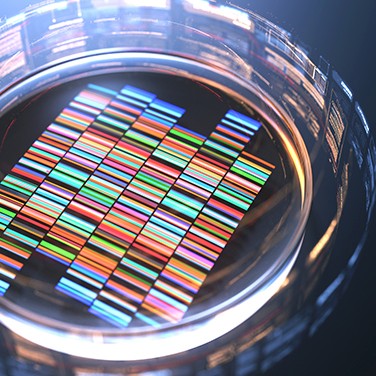Demystifying the Science and Data Behind DNA Testing Services
By Christina Phillis
Equipped with just a saliva sample and your curiosity, you can use direct-to-consumer (DTC) DNA testing services to discover more about your ancestors or whether you’re likely to have inherited certain genetic conditions or diseases. Your DNA can help you piece together a puzzle about your past and your potential future.
While some of the more well-known tests promise accuracy that ranges from 98 to 99 percent, each can yield varied results. Let’s take a closer look at the science that makes them different, how DNA databases have been used to solve crimes — and why you might be surprised by your results.
A Not-So-Basic Science
DNA testing services offer different types of analyses depending on what you’re trying to learn. If you’re exploring your genealogy, your sample will likely undergo microarray-based autosomal DNA testing. This provides DNA information from both your mother’s and father’s sides of the family.
Using a genotyping array, scientists look for select genetic markers called single nucleotide polymorphisms (SNIPs) or DNA sequence variations that make each individual unique. These differences account for only 0.5 percent of the more than 600,000 markers that are genotyped per individual.
If you want to find out more about how your genes may affect your life, family history, and wellness, your autosomal DNA, mtDNA, and yDNA will be examined. Mitochondrial or mtDNA is inherited from your mother while yDNA is only passed from fathers to sons. This can be important in determining genetic health risks because certain disorders can only be passed via X or Y chromosomes. These are referred to as X-linked and Y-linked genes, respectively.
Surprising Results
The various DTC tests use different databases and algorithms to analyze your DNA. Currently, the AncestryDNA database contains more than 16,000 reference DNA samples from 43 regions and 70,000 locations around the world. Roughly 12,000 of these samples are from users who gave Ancestry permission to utilize their results for research purposes. Others come from public databases like the 1000 Genomes Project. As these databases grow, your results may change as new information is discovered.
Testing services can also skew results toward different regions as well, making the results less detailed and more prone to error for certain ethnicities. In general, African and Asian genomes are underrepresented, but the 23AndMe database offers a more complete view of East Asian regions.
If you and your siblings take the test, don’t expect to see identical results. Thanks to a process called genetic recombination, chromosomes are not always replicated exactly. During meiosis, the number of chromosomes in sperm and egg cells is reduced by half so that the combination of the two during fertilization will produce a full complement of chromosomes. The pairs of chromosomes will not always split in the same way, and small bits of genetic material may be exchanged between the pairs. That means that siblings, even fraternal twins, are unlikely to end up with the same DNA from each parent. The more diverse your ancestry, the more pronounced the results may be.
Mystery Solved
Beyond telling you about your ancestors’ origins or your risk for certain health conditions, DNA testing may help fill the gaps in your family tree. Your DNA can be used to connect you with others, including distant relatives, who have also taken the test. Not only is this information useful for solving family mysteries, it can also help law enforcement officials crack cold cases: In April 2018, police used GEDmatch, an open-source database of freely shared DNA, to help narrow their search for the Golden State Killer, an investigation that had been ongoing for 40 years.
As more DNA is added to various databases, the information becomes more robust. Currently, it’s reached the point where you may not even need to be tested to be identified. According to a Columbia University study, 60 percent of the American population can now be identified through a third cousin or closer relative through AncestryDNA or another consumer service. While these companies have measures in place to protect your privacy, this data may be shared with law enforcement or sold to third party companies. Before you have your DNA tested by one of these companies, make sure that you understand the terms of the agreement and how to remove your data if you reconsider later.
As long as you’re aware of the potential pitfalls and understand how your personal data may be used, direct-to-consumer DNA testing services are a great way to learn more about your family history and genetic health risks.
